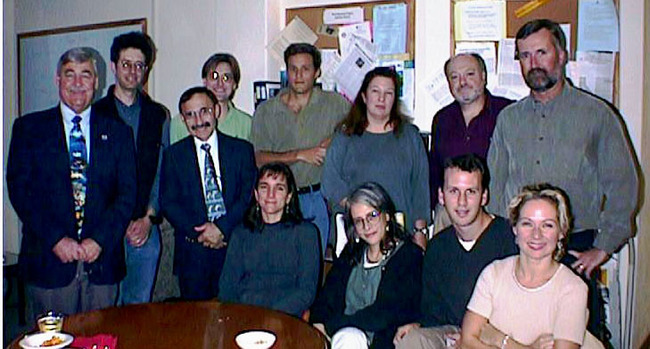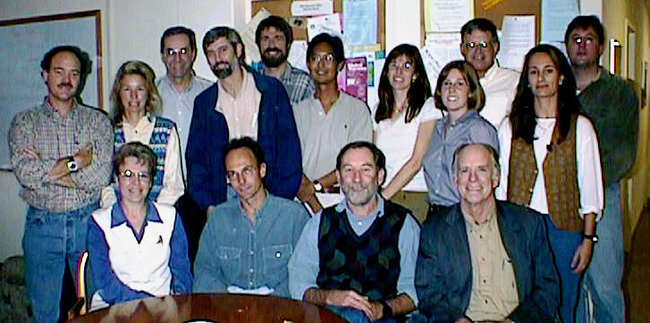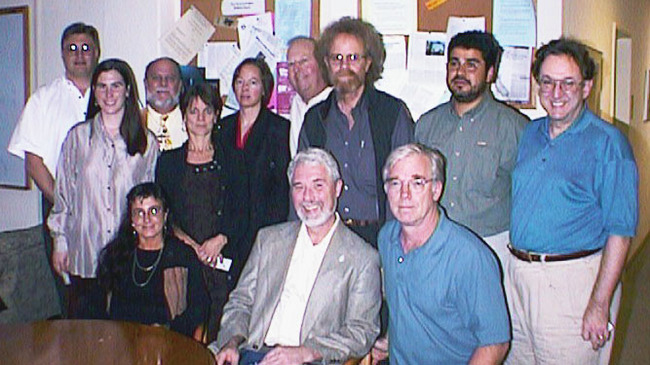NCEAS Working Groups
Developing the theory of marine reserves
Project Description
We are requesting funds to support an NCEAS working group that will focus on the development of a theoretical basis for the design and establishment of marine reserves. Although there has been an increase in the number of marine reserves designated to manage marine resources, there has not been a concomitant increase in our understanding of marine reserve theory. As a result, reserve designs have often relied heavily on theory formulated for terrestrial ecosystems or on no theory at all. Recent research on open ecosystems suggests that marine reserves designed using these principles are likely to be ineffective at protecting marine communities over the long term. This fact, along with constantly increasing human pressure on marine ecosystems, indicates that a theory of reserve design specific to marine ecosystems is urgently needed. A multidisciplinary working group organized through NCEAS has the potential to make a significant contribution to our current understanding of marine reserves.
Center Associate: Deborah McArdle
Funding for the support of the Center Associate for the Marine Reserves Working Group is provided by Sea Grant



Principal Investigator(s)
Jane Lubchenco, Steven D. Gaines, Stephen R. Palumbi
Project Dates
completed
Participants
- Gary Allison
- Oregon State University
- Sandy J. Andelman
- University of California, Santa Barbara
- James Bohnsack
- NOAA, Southeast Fisheries Science Center
- Louis W. Botsford
- University of California, Davis
- George M. Branch
- University of Cape Town
- Rodrigo Bustamante
- Charles Darwin Research Station
- Mark H. Carr
- University of California, Santa Cruz
- Edward Cassano
- NOAA, National Marine Sanctuary Channel Islands
- Juan Carlos Castilla
- Pontificia Universidad Católica de Chile
- Billy D. Causey
- NOAA, National Marine Sanctuary Florida Keys
- Felicia Chisolm-Coleman
- Florida State University
- Renee Davis-Born
- Oregon State University
- Patty Debenham
- University of California, Santa Barbara
- Jenifer E. Dugan
- University of California, Santa Barbara
- Ginny Eckert
- University of California, Santa Barbara
- Miriam Fernandez
- Pontificia Universidad Católica de Chile
- Dave Fluharty
- University of Washington
- Rod M. Fujita
- Environmental Defense Fund
- Steven D. Gaines
- University of California, Santa Barbara
- Leah R. Gerber
- University of Washington
- Brian Grantham
- Oregon State University
- Benjamin S. Halpern
- University of California, Santa Barbara
- Alan Hastings
- University of California
- Julie Hawkins
- University of York
- Eileen Hofmann
- Old Dominion University
- Edward Houde
- University of Maryland
- Kevin D. Lafferty
- University of California, Santa Barbara
- John L. Largier
- University of California, San Diego
- Heather M. Leslie
- Oregon State University
- Dale Lockwood
- University of California, Davis
- Jane Lubchenco
- Oregon State University
- Deborah McArdle
- University of California, Santa Barbara
- Fiorenza Micheli
- Università di Pisa
- Steven Murray
- California State University, Fullerton
- Joseph E. Neigel
- University of Louisiana, Lafayette
- Elliott A. Norse
- Marine Conservation Biology Institute
- John C. Ogden
- Florida Institute of Oceanography
- Stephen R. Palumbi
- Harvard University
- Ana Maria Parma
- International Pacific Halibut Commission
- Charles H. Peterson
- University of North Carolina
- Stuart Pimm
- University of Tennessee, Knoxville
- Hugh P. Possingham
- University of Adelaide, Roseworthy
- Callum Roberts
- University of York
- Susan Roberts
- Ocean Studies Board, HA-470
- Joe Roman
- Harvard University
- Mary Ruckelshaus
- NOAA, Northwest Fisheries Science Center
- James Seger
- Pacific Fishery Management Council
- Alan L. Shanks
- University of Oregon
- Joshua Sladek-Nowlis
- Center for Marine Conservation
- Vikki Spruill
- SeaWeb
- Richard R. Strathmann
- Friday Harbor Labs
- Robert R. Warner
- University of California, Santa Barbara
- Michael Whitlock
- University of British Columbia
- James Wilen
- University of California, Davis
Products
-
Journal Article / 2003
Applying ecological criteria to marine reserve design: A case study from the California Channel Islands
-
Journal Article / 2003
Ensuring persistence of marine reserves: Catastrophes require adopting an insurance factor
-
Journal Article / 1999
Marine reserves and management of the northern California red sea urchin fishery
-
Journal Article / 2001
Dependence of sustainability on the configuration of marine reserves and larval dispersal distance
-
Journal Article / 2003
Principles for the design of marine reserves
-
Journal Article / 2003
Comparing marine and terrestrial ecosystems: Implications for the design of coastal marine reserves
-
Journal Article / 2003
Avoiding current oversights in marine reserve design
-
Journal Article / 2001
Review: Conservation biology of Cetaceans in marine communities of Baja California: Science or advocacy?
-
Journal Article / 2002
The influence of life history attributes and fishing pressure on the efficacy of marine reserves
-
Presentations / 2003
Building on Beverton's legacy: Life history variation and fisheries management
-
Journal Article / 2003
Population models for marine reserve design: A retrospective and prospective synthesis
-
Book Chapter / 2004
Biological uncertainty and extinction risk for Steller sea lions (Eumetopias jubatus)
-
Journal Article / 2003
Dispersal potential of marine invertebrates in diverse habitats
-
Journal Article / 2002
Marine reserves have rapid and lasting effects
-
Journal Article / 2003
The impact of marine reserves: Do reserves work and does reserve size matter?
-
Journal Article / 1999
Equivalence in yield from marine reserves and traditional fisheries management
-
Journal Article / 2003
Comparing designs of marine reserves for fisheries and for biodiversity
-
Journal Article / 2003
Considerations in estimating larval dispersal distances from oceanographic data
-
Journal Article / 2003
Using siting algorithms in the design of marine reserve networks
-
Journal Article / 2002
The effects of dispersal patterns on marine reserves: Does the tail wag the dog?
-
Report or White Paper / 1998
Developing a Theory of Marine Reserves - Summary of November 1998 Meeting
-
Report or White Paper / 1998
Developing the Theory of Marine Reserves - Summary of Meeting 1
-
Report or White Paper / 1999
Developing a Theory of Marine Reserves - Summary of May 1999 Meeting
-
Journal Article / 2003
Plugging a hole in the ocean: The emerging science of marine reserves
-
Book Chapter / 2001
Managing with reserves: Modeling uncertainty in larval dispersal for a sea urchin fishery
-
Journal Article / 2003
Species-area relationships and marine conservation
-
Presentations / 1999
NCEAS progress
-
Book Chapter / 2000
The ecology of marine protected areas
-
Book / 2002
Marine Reserves: An Ecosystem Tool for Marine Management and Conservation
-
Journal Article / 2003
Population genetics, demographic connectivity, and the design of marine reserves
-
Report or White Paper / 2000
Fully-protected marine reserves: A guide
-
Journal Article / 2001
Designing marine reserve networks: Why small, isolated protected areas are not enough
-
Journal Article / 2003
Application of ecological criteria in selecting marine reserves and developing reserve networks
-
Journal Article / 2003
Ecological criteria for evaluating candidate sites for marine reserves
-
Presentations / 1999
Using siting algorithms to site reserves
-
Journal Article / 2003
Propagule dispersal distance and the size and spacing of marine reserves
